
WITH their elongated central tail feathers terminating in a spatula or racquet, the members of the genus Prioniturus, the racquet tails, form a distinctive group of parrots. Of the nine recognised species, three are found in Indonesia and six are confined to the Philippines where one, the handsome blue-headed racquet-tail (P. platenae), is endemic to the island of Palawan and its satellite islands.
The blue-headed racquet-tail, or “Kilit” as it is known in Palawan, inhabits lowland forest, forest edge and nearby cultivation up to at least 300m (984ft) above sea level, but due to extensive lowland deforestation its optimum habitat is severely fragmented and degraded. BirdLife International estimates its population at no more than 10,000 individuals and perhaps as few as 2,500. Therefore it is classified by the International Union for the Conservation of Nature (IUCN) as Vulnerable to extinction. P. platenae shares the same habitat as the Philippine cockatoo (Cacatua haematuropygia), a Critically Endangered species endemic to the Philippine islands, with Palawan as its stronghold.
Because of the dire situation of the cockatoo, since 1999 the Loro Parque Fundación (LPF) has been the principal supporter of the Philippine Cockatoo Conservation Programme (PCCP) run by the Katala Foundation Inc. (KFI). Because of its status, the PCCP uses the cockatoo as a flagship species for biodiversity conservation, and inevitably this has somewhat overshadowed other species such as the racquet-tail. However, even if it has placed less emphasis than the cockatoo on getting the local communities involved, from the outset the PCCP has included the blue-headed racquet-tail in all of its scientific work.
هذه القصة مأخوذة من طبعة November 20, 2019 من Cage & Aviary Birds.
ابدأ النسخة التجريبية المجانية من Magzter GOLD لمدة 7 أيام للوصول إلى آلاف القصص المتميزة المنسقة وأكثر من 9,000 مجلة وصحيفة.
بالفعل مشترك ? تسجيل الدخول
هذه القصة مأخوذة من طبعة November 20, 2019 من Cage & Aviary Birds.
ابدأ النسخة التجريبية المجانية من Magzter GOLD لمدة 7 أيام للوصول إلى آلاف القصص المتميزة المنسقة وأكثر من 9,000 مجلة وصحيفة.
بالفعل مشترك? تسجيل الدخول
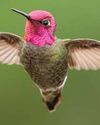
The World's Best-Known Hummingbird?
Intensively studied, the gem-like Anna’s hummingbird is a welcome visitor to the gardens of America’s most populous state: California. Bill Naylor investigates its life history
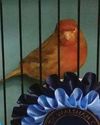
The charm of the English Cinnamon
Despite its long and complicated history, the true Cinnamon canary is still with us – in the hands of a tiny group of breeders. DONALD SKINNER-REID reckons it deserves wider appreciation
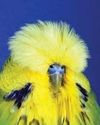
Spangles: a personal overview
FRED WRIGHT relates a budgie story of over-exploitation, consequent problems and abundant potential for the future

New converts to old breeds
Old and rare canaries have a reputation for adding fresh interest and challenge to the hobby. PETE HOOK and NICK JOY agree, and explain the birds’ charm to Dave Brown

Themed aviaries are a hit with the public at annual Stafford show
DECORATIVE AVIARY DISPLAYS from a CBS and an online bird keeping advice group were voted in the top three by visitors for the inaugural Stafford Aviary Competition.
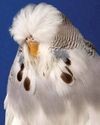
Pieds with potential
More than just a lesser variety, the dominant pied will introduce challenge and change into most studs, reckons CLIVE WAKEMAN. Here he discusses pairings to try and others to avoid

Club News
Welcome to the club and show pages – the bit that’s all about you Results: convention, specialist & rare and Breeder of the Year

Canaries Month by Month:
With Christmas around the corner, BRIAN KEENAN is well into his winter programme, and reckons he might deserve a nice outcross
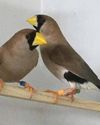
Smart Choice, Docile Nature
Dave Brown welcomes the masked grassfinch to his birdroom and shares advice on this lovely Australian species
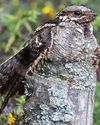
The truth about the ‘flying toad'
Odd local names and weird superstitions can’t hide the beauty and elegance of the nightjar, a species that has made a fascinating subject in a few zoo collections, reveals BILL NAYLOR